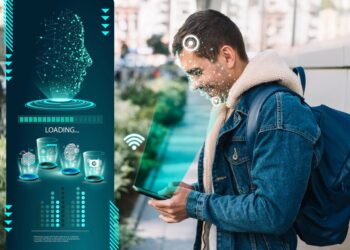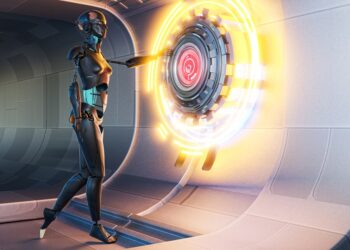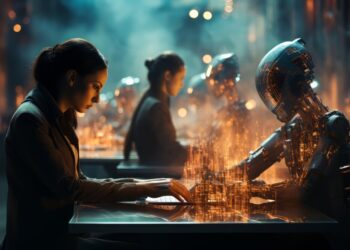The Intersection of Robotics and AI: Current Trends and Future Developments
The intersection of Artificial Intelligence (AI) is transforming the way we live and work by providing innovative and impactful solutions to complex problems. The AI are increasingly being integrated to create intelligent machines that can learn, reason, and interact with humans in new and innovative ways. In this article, we explore the current trends and future developments in the intersection of Robotics and AI.
Current Trends in Robotics and AI
Collaborative Robots: Collaborative robots or cubits are designed to work alongside humans to perform tasks in a shared workspace. Cabot’s are being used in manufacturing, healthcare, and other industries to enhance productivity and safety.
Autonomous Vehicles: Autonomous vehicles are becoming increasingly common in transportation and logistics industries. These vehicles are able to navigate complex environments and make decisions in real-time based on sensor data.
Personal Robotics: Personal robots are being used in homes and healthcare settings to provide assistance and support to individuals. These robots are becoming increasingly sophisticated and are able to perform tasks such as cleaning, cooking, and providing medication reminders.
AI-Powered Virtual Assistants: AI-powered virtual assistants are being used in businesses and homes to provide real-time assistance and support. These virtual assistants are able to perform tasks such as scheduling appointments, providing customer support, and making recommendations based on user preferences.
Future Developments in Robotics and AI
Swarm Robotics: Swarm involves the use of multiple robots that work together to perform tasks in a coordinated manner. Swarm has the potential to revolutionize industries such as agriculture, manufacturing, and logistics.
Humanoid Robots: Humanoid robots are robots that are designed to resemble humans in appearance and behavior. These robots have the potential to provide assistance and support in areas such as healthcare and education.
Exoskeletons: Exoskeletons are wearable devices that can enhance the physical abilities of humans. These devices have the potential to revolutionize industries such as manufacturing and healthcare by reducing physical strain and increasing productivity.
Autonomous Drones: Autonomous drones have the potential to transform industries such as delivery, transportation, and logistics. These devices are able to navigate complex environments and make decisions in real-time based on sensor data.
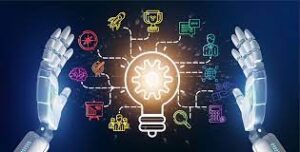
Challenges and Opportunities in Robotics and AI
Technical Complexity: Robotics and AI require specialized technical expertise, which may be difficult for some businesses to acquire.
Integration: Robotics and AI require integration with existing systems and processes, which can be challenging for some businesses.
Ethical Concerns: Robotics and AI raise ethical concerns, particularly around job displacement and the impact on human workers.
Security: May be vulnerable to cyber attacks, leading to the theft of sensitive business data.
Adoption: Require investment in new technology and processes, which may be a barrier to adoption for some businesses.
To successfully leverage Robotics and AI, businesses should take the following steps:
Invest in Technical Expertise: Businesses should invest in technical expertise and resources to successfully implement and manage systems.
Ensure Integration: Businesses should ensure that AI systems are integrated with existing systems and processes to ensure that they can be used effectively.
Address Ethical Concerns: Businesses should address ethical concerns by being transparent about how they are using how they are protecting workers.
Prioritize Cybersecurity: Businesses should prioritize cybersecurity and ensure that Robotics and AI systems are secure and protected against cyber attacks.
Conclusion
The intersection of Robotics and AI is transforming the way we live and work by providing innovative and impactful solutions to complex problems. While it presents both opportunities and challenges, it is clear that Robotics and AI will play an increasingly important role in various industries. By investing in technical expertise, ensuring integration, addressing ethical concerns, and prioritizing cybersecurity, businesses can successfully leverage and AI to provide innovative and impactful services to their customers. As technology continues to evolve and become more sophisticated, we can expect to see new and innovative applications and use cases, providing new opportunities for businesses and society as a whole.
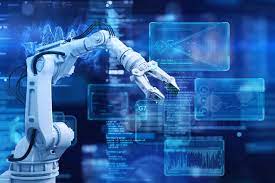
Moreover, the intersection of Robotics and AI is not limited to the trends and developments discussed in this article. As Robotics and AI technology continues to evolve and become more sophisticated, we can expect to see new and innovative applications and use cases in various industries and sectors of society.
For example, in the healthcare industry, AI can be used to develop new treatments and therapies for patients. In the agriculture industry, and AI can be used to optimize crop yields and reduce waste. In the energy industry, Robotics and AI can be used to improve the efficiency of renewable energy systems.
As new Robotics and AI applications and use cases are developed, it will be important for businesses to continuously adapt and innovate to stay ahead of the curve.
One way to do this is to collaborate with industry partners, invest in research and development, and prioritize innovation and creativity. By doing so, businesses can successfully leverage Robotics and AI to provide innovative and impactful services to their customers, while also adapting to the changing landscape of Robotics and AI technology.
Robotics and AI are transforming various industries by providing innovative and impactful solutions to complex problems. While it presents both challenges and opportunities, it is clear that Robotics and AI will play an increasingly important role in the future of work and society as a whole. By investing in technical expertise, ensuring integration, addressing ethical concerns, and prioritizing cybersecurity, businesses can successfully leverage Robotics and AI to provide innovative and impactful services to their customers. As Robotics and AI technology continues to evolve and become more sophisticated, we can expect to see new and innovative applications and use cases, providing new opportunities for businesses and society as a whole.
It is also important to note that the intersection of Robotics and AI is not limited to the business sector alone. Robotics and AI are also transforming society as a whole, by changing the way we live, work, and interact with each other.
For example, in the education sector, an are being used to personalize the learning experience and provide new opportunities for students. In the entertainment industry, Are being used to create immersive and interactive experiences for audiences. In the social sector, Robotics and AI are being used to address social and environmental challenges, such as climate change and poverty.
As and AI technology continues to evolve and become more sophisticated, we can expect to see new and innovative applications and use cases in various industries and sectors of society.
The intersection of Robotics and AI is transforming the way we live and work by providing innovative and impactful solutions to complex problems. While it presents both challenges and opportunities, it is clear that AI will play an increasingly important role in various industries and sectors of society. By investing in technical expertise, ensuring integration, addressing ethical concerns, and prioritizing cybersecurity, businesses can successfully leverage AI to provide innovative and impactful services to their customers. As technology continues to evolve and become more sophisticated, we can expect to see new and innovative applications and use cases, providing new opportunities for businesses and society as a whole.




